7 “RED PILL TRUTHS” ABOUT BUILDING MUSCLE YOU NEED TO KNOW

These are the TRUTHS About Building Muscle…
Would you take the red pill or the blue pill to find out the real truths about building muscle?
Well, in this article, I’m going to be revealing 7 “red pill” (for the sake of the metaphor), harsh truths when it comes to gaining muscle, losing fat, and just building an impressive physique in general.
These are things that aren’t talked about very often because, even though they’re true, they maybe aren’t the most uplifting things to hear. Also, they’re things that a lot of people just aren’t aware of–especially beginners.
But, sometimes the truth hurts, and we’re not here to B.S.
If you know me from my YouTube or this blog, then you know that I’m not going to feed you a bunch of “feel good, yet false” positivity just for the sake of it. Plus, I think most people will be better off in the long run if they understand the reality behind these 7 things.
So, let’s dive in.
Muscle Building Truth #1:
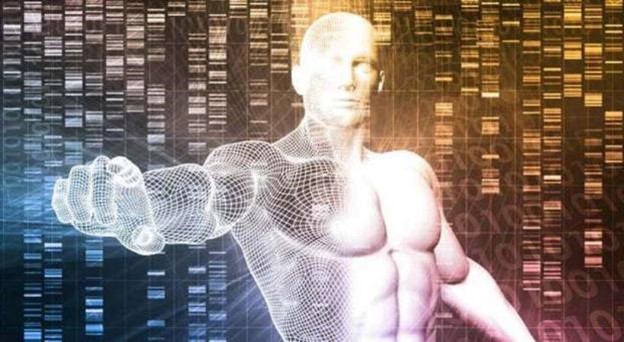
The first harsh truth on the list has to do with genetics.
Genetics don’t just “play a role” in the muscle building process. In reality, genetics actually play a pretty critical role–probably more of a role than most fitness coaches want to admit.
Now, I’d say that anyone out there who has at least average genetics can still achieve what would be considered as an impressive physique. So long as they use the proper program, and implement enough hard work and consistency over the long term, they’ll be in good shape–literally.
So, don’t let average genetics discourage you.
However, where genetics do play a very significant role is in terms of how quickly any given person can put on muscle. It also is crucial in how seriously they’re going to need to take their training and nutrition in order to build that muscle.
A person’s ultimate muscle building potential is dependent on genetics–not just the body as a whole but also on an individual body part level. In addition to that, their physique’s overall aesthetics are genetics-based.
The reality is: unless you have upper tier genetics, as in, the top few percent, you are not going to look like the vast majority of popular fitness influencers showing up in your Instagram feed.
By necessity, for someone to reach that really popular position and gain that amount of attention, they need to stand out of the crowd. Out of the millions of other people posting fitness content, they’re going to need to have the type of genetics that allow them to build a truly elite physique.
Again, on the per-muscle group level, an impressive physique is all about genetics. This includes muscle shape, muscle insertions and how they tie in with your height, limb length, waist size, joint size, etc.
All of this stuff is important for those influencers posting shirtless pictures and videos. But, it’s pretty much entirely a result of hard-wired from birth genetics.
Looking impressive on social media isn’t even so much about raw muscle size. It’s more so about being lean, and then having good structural genetics to go along with it.
Because it’s really difficult to judge size through photos, people who are lean and have that optimal body/muscle structure will look bigger than they actually are in person.
So, I know it’s a massive cliché, but ultimately you just have to make the very best of what you have.
Again, most people out there can still build a solid, muscular, lean, and strong body. But, just like you’re not going to become an elite sprinter, or basketball player, or mathematician/musician (unless you have a certain amount of God-given talent for those things), you’re also not going to have an elite physique unless you also have the genetic capacity for it.
Some people might see that as discouraging, but I think you could also say it’s very liberating. Understanding that can free you from the disappointment and dissatisfaction that comes from having unrealistic expectations.
Muscle Building Truth #2:
Speaking of elite physiques on social media with elite genetics, you also have to remember that a lot of the people you see–probably more than you realize, females included–are probably using pharmaceutical enhancement.
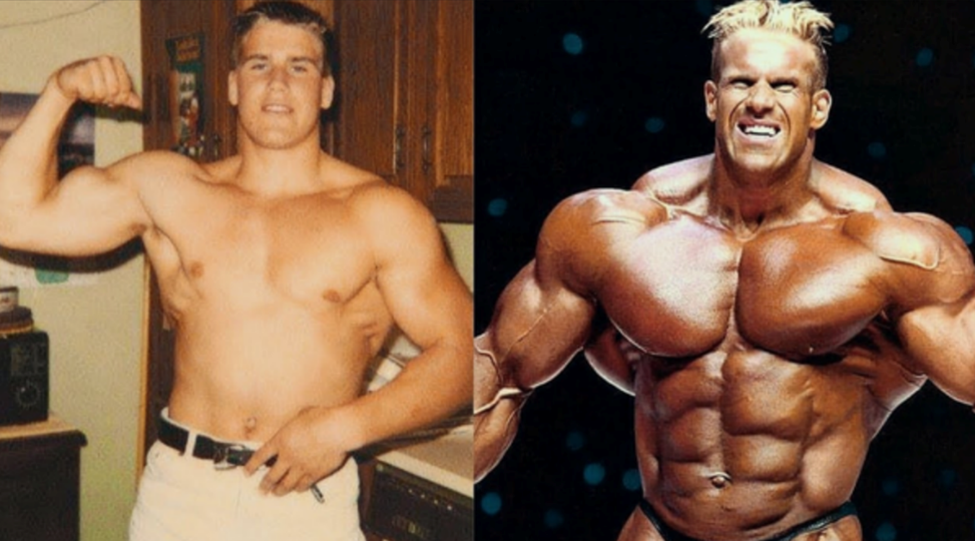
PEDs are a very common thing. Whether someone is doing full blown cycles of steroids, or something like TRT, or even SARMs–each of these substances will provide a very significant muscle building advantage.
A lot of these people, even if they were natural, still have unobtainable physiques for most people with average genetics.
When you add PEDs to the equation, their physique just gets taken to a whole new level. Not to mention when you start adding pumps and optimal lighting, angles, flexing, filters, and possibly even straight up photoshopping, they’ll look even more freaky.
Most people uploading a physique picture to a large audience on social media are least going to add a little bit of sharpness, and improve the lighting a bit. (I’m not saying everyone is severely manipulating their photos, but it’s noticeable when you look closely and see when they’ve darkened the lines on their abs, or other things like that.)
There are still plenty of legit natural lifters out there with impressive physiques who don’t overly manipulate their photos. However, there are also a whole lot of fake natty, Adobe gains specialists mixed in there as well.
Now, if you want to use social media for educational purposes, you definitely are able to do that. It’s very possible to follow people who are actually putting out useful content. Maybe these influencers’ posts directly assist your training and nutrition, or you just find their physique pictures and videos to be motivational or entertaining.
Maybe you just enjoy watching and listening to certain personalities (even if you know it’s not a realistic portrayal of the real world).
But do keep in mind that in a very high percentage of cases, social media is exactly that. It’s not a realistic portrayal of the real world.
You’re often looking at someone who has top tier genetics, is on PEDs, and is only posting their very best, most optimized, and sometimes highly-edited photos.
Muscle Building Truth #3:
If you are a natural lifter and if you’re not among those in the top 1 in 100 genetics, you are not going to be very big and very lean at the same time.
The natural route is the one I recommend going for the vast majority of people. At the very least, until you’ve been training naturally for a solid 5 to 10 years, something like TRT for legit medical reasons could be something to consider. Even after the 5-10 year mark, most people should still stay natural unless they truly require TRT.
But for the natties out there: you’re not going to have the best of both worlds.
If you’re a natural lifter and you want to be really big, you’re going to need to sit at a slightly higher body fat percentage. Let’s say you’re after the type of physique where you look significantly jacked even in clothes. You’d probably have to be in the higher teens, say, 16% to 20% body fat to achieve that look.
If you want to look really big, you’re going to need to be okay with being a bit softer. You’ll look awesome with a shirt on, but less impressive without one.

You’ll also look less impressive in photos and videos, if maybe, say, you make a living from fitness and that’s important to you. In fact, it will actually cause you to look smaller in photos and videos.
Then there’s the flip side.
If you want to be really lean–ripped six pack, striations, veins popping out everywhere–you’re also going to have to sacrifice a pretty decent amount of overall size and fullness to get there.
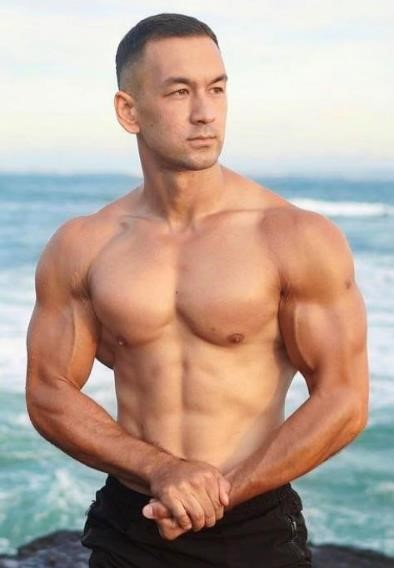
Not only that, but you’re also likely to end up with a variety of diet related side effects, such as less energy, more hunger, low libido, irritable mood, etc.
Now, you’ll look really impressive in a tank top/shirtless and online. It’s great for racking up those Instagram likes. But in real life–in regular clothes–you’ll pretty much be flirting with “do you even lift” status.
But, bottom line, you’re not going to be really big and really lean unless you’re on a consistent dose of that high quality pharmaceutical grade “creatine.” Vitamin S, if you will.
And personally, my approach is to go somewhere in the middle (without that special creatine). I’m talking about not too big and too soft, not too lean and too small.
I usually don’t go below about 12% body fat and rarely go above 14%. I think that strikes a good middle ground between size and leanness and just overall physical functioning both in and out of the gym.
Muscle Building Truth #4:
This truth involves the sharp diminishing returns that are at play when it comes to gaining muscle as a natural lifter.
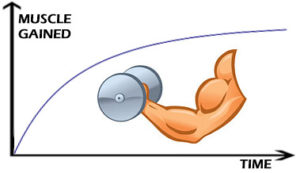
Muscle growth is not a linear process where for each set period of time, you gain X amount of muscle and just keep getting linearly bigger and stronger over time.
Every pound of muscle you gain will come at a slower rate and be more difficult to achieve in comparison to the pounds of muscle that came before it.
You have to understand that your body has genetic limits in place to prevent you from carrying too much muscle. Muscle itself is metabolically expensive tissue that requires more energy to maintain as you gain more and more of it.
So, in the first year of proper training, you’ll make your newbie gains where muscle growth happens relatively quickly since it’s a brand new stimulus for your body. You’ll probably put on something like 50% of the total muscle you’re ever going to build, assuming that you do things properly and consistently.
From there, it should slow down by about half from year to year, as a rough estimate.
So, year 2 might be 75% of your total gains, year 3 maybe 85%, and then at years 4-5 and beyond, you should be right up near your natural limit if you’ve done things correctly.
This doesn’t mean you can’t still make gains. However, it’s going to happen way, way slower. It’s also important at that point to really be patient with things since you’ll basically be lifting for an entire year just to gain a very small amount of additional muscle.
If you’re expecting to make gains at the same rate in year 3, 4, or 5 as you did in year 1, and you’re shoveling back a ton of calories and being too aggressive in the gym trying to force new muscle growth, you’re either going to end up injured, fat, or fat and injured.
I’m guessing this probably is not what you’re aiming for.
Muscle Building Truth #5:
Switching gears (no, not that kind of gear) a little bit is on the topic of supplements.
Most supplements (not some, not a decent percentage, but most supplements) do not work. Period.
I say this as someone who owns a supplement line. It would be in my best interests to just hype the ever living crap out of my supplements to get people to buy more.
Now, there are a select few supplements that can be helpful for maximizing your overall training performance, your body composition, and your health. I use supplements personally and have for many years.
But at the end of the day, the supplements that actually work are very few and far between. They’re just the icing on the cake after your training and nutrition is fully dialed in. They are NOT the cake itself like a lot of people think.
Probably around 90% to 95% of supplements being sold are complete B.S. They’re not actually going to do anything for you as far as building more muscle and losing more fat is concerned.
BCAAs, testosterone boosters, growth hormone boosters, fat burners, glutamine, advanced forms of creatine, high tech protein powders, intra workout supplements, CLA…you name it. The list goes on and on.
Even within the categories of supplements that are worthwhile, such as a multivitamin, pre-workout, creatine blend, etc., most companies don’t even formulate those ones properly either.
The truth is that a lot of these fitness influencers and YouTubers really don’t have your best interests at heart. Even though it might seem like they do on the surface (they’ve got the big smile and they seem sincere or whatever), the reality of this world is that people do in fact lie in order to make money.
Shocking, I know.
I know it’s not what people want to hear, but even if these people do have good intentions, many of them just aren’t knowledgeable about supplements in the first place. So, they just promote all this crap without even realizing they’re ripping people off.
All in all, don’t take anyone’s advice at face value. It’s okay to be skeptical and do your own independent research. If you don’t, chances are you’re going to end up wasting a lot of money on a bunch of garbage that is ultimately providing little to no benefit for you.
The right supplements, in the proper forms and doses, can help to round out your overall fitness program. But, most of what’s out there is a straight up steaming pile of worthless garbage.
Muscle Building Truth #6:
Switching gears again, these last two truths are a bit more on the mindset side of things.
Truth #6 is: regardless of how hard and how long you work at this, you’re probably never going to be genuinely satisfied with your physique.

No matter how great the results are that you achieve, this is the sheer reality of things.
As a beginner, you might be thinking, “oh if I could just put on some muscle, lean down a bit, and look even half as good as these guys I see on Instagram, that would be good enough for me!
However, I guarantee that is not what will happen.
What actually happens is that, as your physique improves, the bar for what you consider to be a “good” physique will just move along with it.
This applies to every area of life and not just fitness. It’s just how our brains are evolutionarily wired to keep us striving for more and more.
With each new level that we reach, each achievement that gets unlocked, we get a temporary little burst of “warm, fuzzy, and good” feelings, but pretty soon after, that new level will just become the new “normal.”
This occurs whether the achievement is is fitness or career related, an athletic endeavor, or really anything else that you’re trying to improve at and taking seriously. Once you reach that new level, it just won’t satisfy you anymore.
You’ll mentally return to baseline, and you’ll just look ahead to the next level. You’ll start comparing yourself to the people who are at that next higher level. Then, you’ll aim for that; maybe you’ll even get there.
But then, the cycle continues on and on. This is known as the hedonic treadmill theory, or the “metaphor for the human tendency to pursue one pleasure after another” (Healthline).
Now, this will affect different people to different degrees. I myself have had periods where I was relatively satisfied with my physique (though definitely not totally satisfied), but I felt reasonably good about it overall. However, that was because I was more focused on other areas of my life, business in particular.
But when you’re taking any given area of life seriously–which, I am taking my training more seriously again now–then that cycle of always wanting to improve and never really being content just comes with the territory.
I think humans are hardwired to be unsatisfied and discontent. It’s how our brains evolved because it’s what keeps us clawing and striving for more.
Thus, I think it’s more about accepting that fact and learning how to live in harmony with it, rather than thinking that one day, you’re going to arrive and be fully satisfied and content with everything.
But, sorry to break it to you, that’s just never going to happen. As a lot of people say, it’s more about learning to enjoy the process rather than getting overly hung up on the external results.
Muscle Building Truth #7:
And now our last harsh truth, the ultimate red pill, which is related to the previous one.
Looking at things from an even bigger picture standpoint, you have to understand that building a lean and muscular body is not going to make you “happy.”
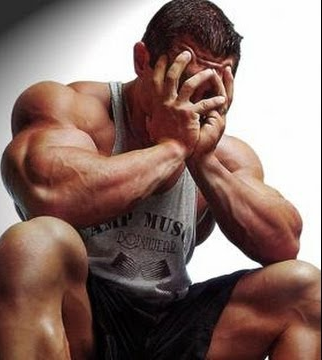
Now to be clear, it can definitely improve your quality of life. Consistent training, proper nutrition, and all their counterparts are obviously great habits to have and will physically make you feel good by just optimizing your brain chemistry in general.
Plus, when you feel good about how you look, you feel confident in your appearance. You like the way your clothes fit you. You feel like a reasonably attractive person.
Yes, all of those things will bring a certain level of satisfaction into your life that you didn’t have before, and I do encourage you to do it. Anyone who pretends like they don’t care how they look or that they wouldn’t rather be healthy, active, and in shape is lying.
However, building an impressive physique is not going to do what a lot of people think it will.
It’s not some magic bullet. You won’t be that person with the the lean, strong, aesthetic physique having all the women come flocking to you and all the men bow down with respect every time you walk into the room.
You won’t be that person that makes passersby just be in this state of constant bliss over your amazing chiseled features. Again, the real world does not work like that.
Just like making a bunch of money won’t do that for you, or buying material possessions, or getting girls. None of those external things are going to put you in some kind of permanent, happy, satisfied state.
Your brain will always adapt to the circumstances and drag you back to baseline. This happens especially when we’re talking about more surface-level external things, such as appearance, possessions, and status.
If there’s anything in life that’s going to bring more lasting genuine satisfaction, or a higher degree of internal contentment, it’s going to be the less sexy things.
These include meaningful relationships, having a purpose of some kind, contributing to the wellbeing of others, being in nature, and doing activities you enjoy.
Then, the things that overlap with fitness–physical exercise, good nutrition, proper sleep–are probably the things that will contribute more to your psychological well being. These, as opposed to having 3D delts or 6% body fat.
So again, absolutely go ahead and build the body you want. Look the way you want to look; there is nothing wrong with that.
I myself work really hard and I enjoy it. I like the feeling of being in good shape just on a basic, surface ego level.
However, don’t think that it’s going to fix you on some fundamental level. It’s not going to make you happy in the deepest sense. If those other more key areas of your life–community, purpose, health–aren’t in order, then you’ll still be unhappy regardless of how aesthetic your physique might be.
Summary
If you want the blue pill answers when it comes to muscle building, you’re going to have to swallow some of the red pill truths first…
- Genetics matter. A LOT.
- Be wary of unnatural fitness influencers–in terms of both their status as a lifter AND how they doctor photos. Look out for those who are probably on PEDs, use Photoshop, etc.
- MOST natural lifters can’t be lean and big at the same time. Find a middle ground that works best for you.
- Muscle growth is not linear; it is subject to the law of diminishing returns. Your gains will slow down.
- MOST supplements are complete B.S.
- You’ll never be satisfied with your body and the way you look.
- There are more important things in life than a good physique, and having one won’t make you inherently happy.
Be sure to share your thoughts about these topics in the comments below. I’m genuinely curious to hear what you have to say, especially about those last points.
If you found this article helpful, make sure to sign up for your FREE custom fitness plan below...




